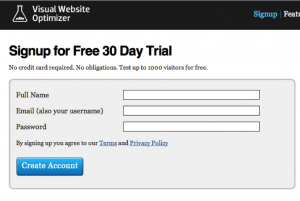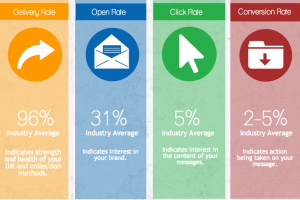With an estimated 196.4 billion emails being sent out every day and businesses being said to account for 59% of this figure, emails are an essential and frequently used method of communication for the majority of businesses. (Radicati.com, 2015).
54 percent of businesses claim that emails are the most essential and effective way of Internet marketing, according to a study from the marketing research firm Ascend 2. This then prompts the questions, why are businesses so keen on email marketing and what makes this strategy most effective? Below is a list I have constructed which highlights some of the key drivers behind why a company would want to use email marketing.
Efficiency
Email marketing can reach a wide audience and with an estimate of 91% of people checking their email at least once a day, this means that businesses have a direct method of targeting a customer with a high probability that the message trying to be communicated will be noticed. UK emails are estimated to have a 22.87% Open rate and a 3.26% Click-through rate (Marketing Email Benchmarks: Open Rates, 2015).
One huge benefit of using email marketing is that it is a remarkably low Cost method. There are no production paper, or postage costs. The only cost is for the use of Email server companies. Due to the immediacy of email, it is possible for businesses to obtain results within minutes of the emails being sent. (Sterne and Priore, 2000)
Segmentation can be achieved as businesses can specifically target the chosen market, by just sending emails to subscribers who meet the chosen criteria.
Brand Awareness
Email marketing also keeps customers in the loop as it helps to build relationships with existing and new customers. Often emails will include the company name and logo and this in turn helps to build trust and increase brand awareness.

Flexibility
Emailing can be available on many different platforms. Flexibility is also an advantage as campaigns are able to be easily changed and adapted if need be. This could be by selecting a different market or demographic for example (Clapham, 2011).
Easy To Use
Small companies are also choosing email marketing and one reason for this is because it is a simple easy to use communication tool. Just 11 percent of the businesses surveyed thought email was one of the most difficult types of digital marketing to execute. Many businesses felt that email marketing brought with it much less difficulty when compared to social network sites such as Facebook and twitter (BusinessNewsDaily.com, 2015).
Expanding target market
Reaching a chosen group of customers can be easy due to the ease of obtaining a persons email address.
 Some ways of obtaining these are; by making customers give an email address when making a purchase, creating a competition entry which requires an address, making a user sign up to use a website, the list goes on.
Some ways of obtaining these are; by making customers give an email address when making a purchase, creating a competition entry which requires an address, making a user sign up to use a website, the list goes on.
There are also a number of services that will allow you to rent or purchase email names but with this method there are a number of risks like a reduction in response rate as thee people may not of shown an interest in your particular product/service. (Emailmarketing, 2015)
Measurable
Tracking a marketing campaign is key in understanding its effectiveness, and with email marketing tracking and measuring the success is fairly simple to do. By tagging your emails using web analytic systems such as Google Analytic this can enable a host of valuable information that can help measure its success (Pure360, 2015).
 The delivery rate relates to how many of your emails are getting through to people’s inbox’s.
The delivery rate relates to how many of your emails are getting through to people’s inbox’s.
Open rate simply identifies what percentage of the contacts opened up the email and can often identify whether the subject line is effective.
Click-through rate enables an understanding of the number of people that have clicked on a link within the email and is often a good way of telling if the message is enticing.
Stable Future
The table below highlights a steady projected growth in the number of email accounts being made by businesses and consumers. This data then suggests that emails are still going to be a significant channel for communication in the next few years.
Email marketing will continue to thrive among businesses because of the high return on investment.
Now that we are clear on why it is vital for businesses to have an email presence, Blog 2 will bring to light the many tools and techniques that are essential in the creation of a successful email marketing campaign.
References
BusinessNewsDaily.com, (2015). The 5 Digital Marketing Strategies Businesses Say Work Best. [online] Available at: http://www.businessnewsdaily.com/7204-internet-marketing-strategies.html [Accessed 22 Apr. 2015].
Clapham, P. 2011, Email marketing, Reed Business Information UK, Sutton [Accessed 22 Apr. 2015].
Emailmarketing.comm100.com, (2015). How to Build Email List? Where to Find Email Subscribers?. [online] Available at: http://emailmarketing.comm100.com/email-marketing-ebook/build-email-list.aspx [Accessed 21 Apr. 2015].
Marketing Email Benchmarks: Open Rates, D. (2015). Marketing Email Benchmarks: Open Rates, CTRs, Device Trends. [online] MarketingProfs. Available at: http://www.marketingprofs.com/charts/2014/25246/marketing-email-benchmarks-open-rates-by-industry-device-trends [Accessed 23 Apr. 2015].
Pure360, (2015). How to measure the success of your email marketing campaigns. [online] Available at: http://www.pure360.com/articles/Measure-email-campaigns [Accessed 22 Apr. 2015].
Radicati.com, (2015). The Radicati Group, Inc.. [online] Available at: http://www.radicati.com/ [Accessed 21 Apr. 2015].
Sterne, J. and Priore, A. (2000). Email marketing. New York: John Wiley & Sons [Accessed 22 Apr. 2015]
